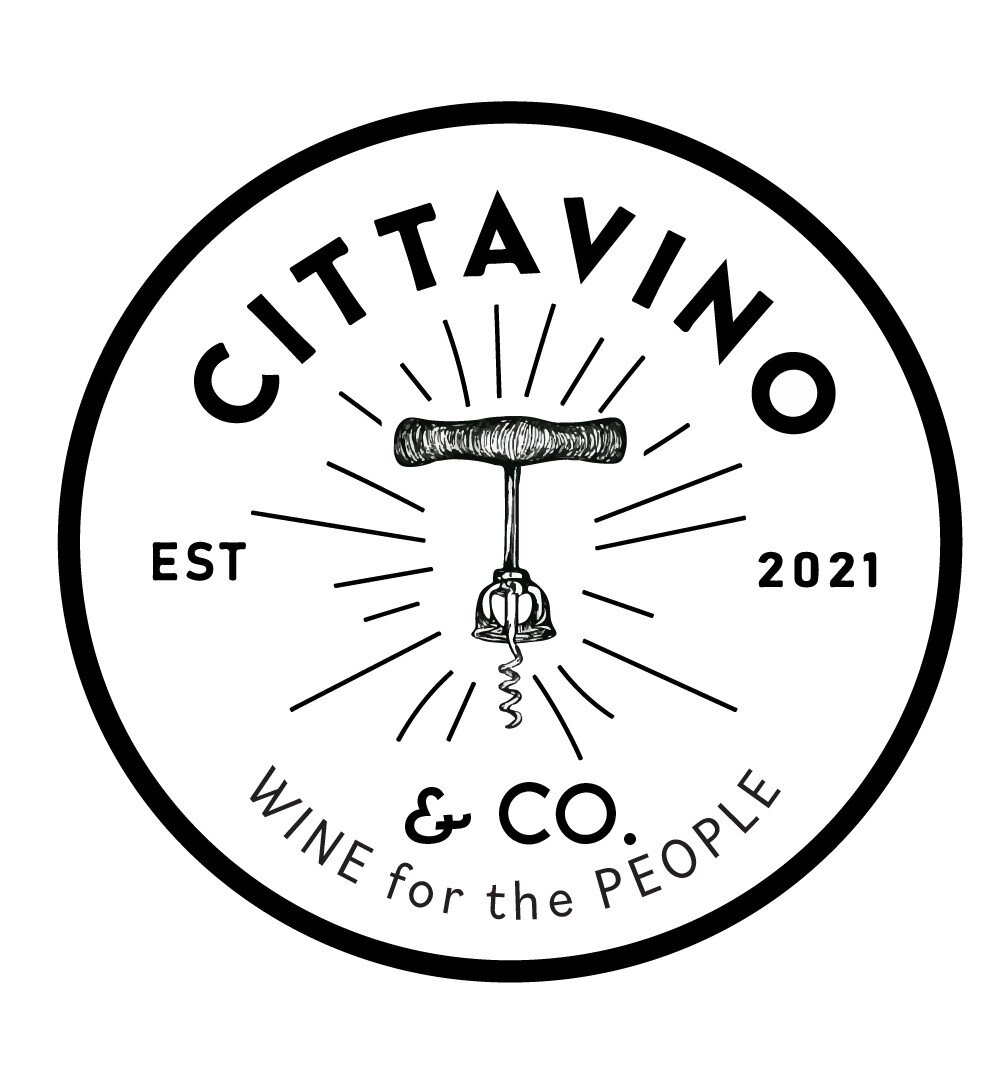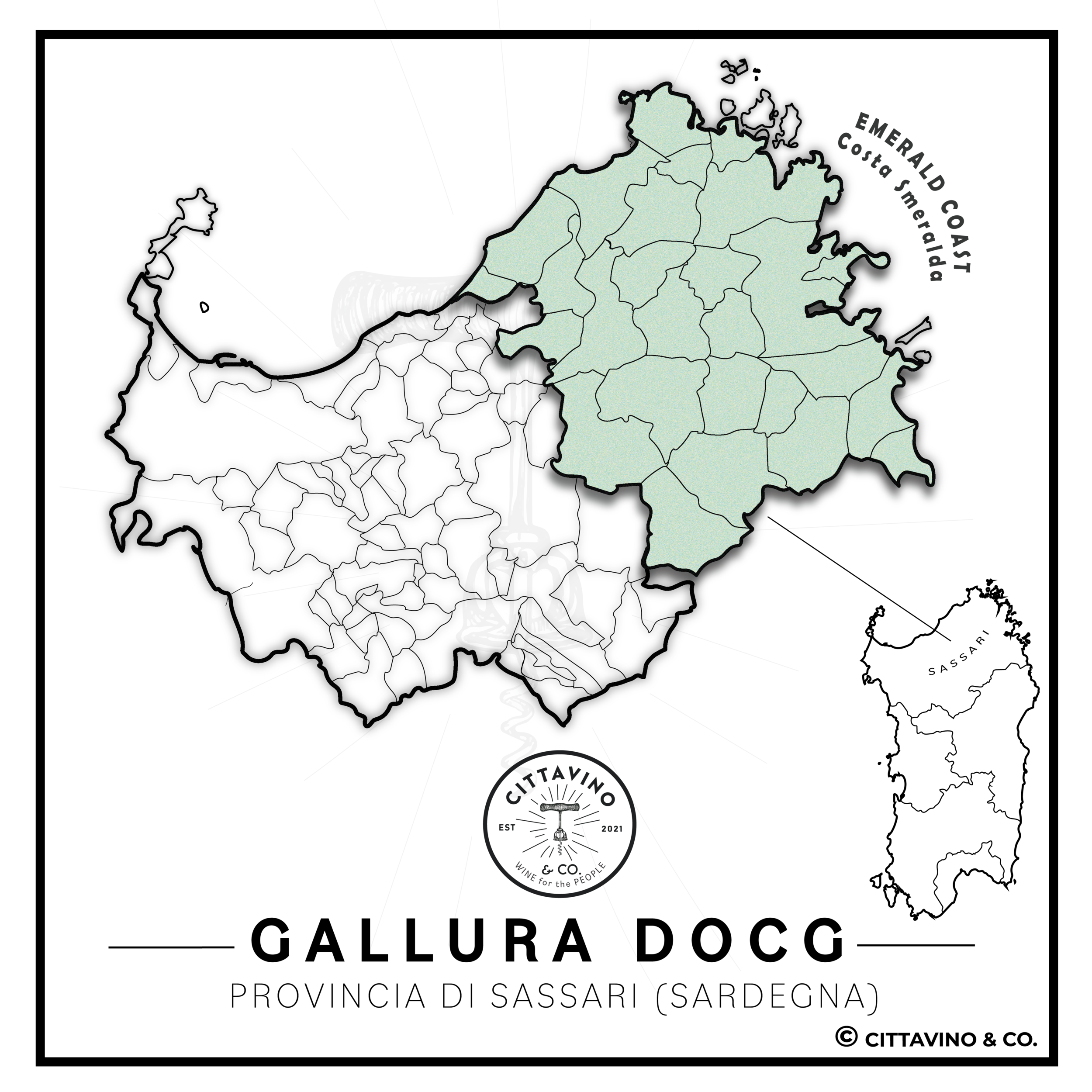VERMENTINO di GALLURA DOCG
The Map
The Gallura DOCG is located on the eastern side of the province of Sassari. Sardegna had its provincial boundaries redrawn in 2001 and again in 2016, leading to some confusion. Please see Sardegna landing page for more information regarding the provinces. As it stands today, Sardegna has four provinces and one large metropolitan city: Sassari, Oristano, Nuoro, Sud Sardegna, and Citta’ Metropolitana di Cagliari.
The name: Vermentino di Gallura DOCG
There are potentially two definitions of Gallura. One is that it comes from the word “gallus”, rooster, which was the symbol on the coat of arms of the powerful Visconti family of Pisa and Sardegna that ruled from 1277 to 1447. There is also reference to “Gallùra”, meaning, “stony area”.
Vermentino di Gallura DOCG is Sardegna’s only DOCG. It was established in 1996 and is dedicated to the Vermentino grape. Generally, us winos consider the Gallura area to produce a more complex, mineral and herbal Vermentino than the rest of the island. It is also said the Vermentino from Gallura age better (though I wouldn’t necessarily recommend cellaring a Vermentino di Gallura. Most of the wine coming out of the zone is still meant for early consumption).
To be considered a Vermentino DOCG, the wine must be at least 95% Vermentino with up to 5% of other allowable non-aromatic white grapes (OANWG), though you will find producers in this area mostly making 100% Vermentino wines. The DOCG also has an altitude cap and the vines must grow at or below 500m asl.
The DOCG also allows for a sparkling wine and a Passito dessert wine, both of which must also be at least 95% vermentino. There is another little category under the Vermentino di Gallura DOCG umbrella called Vendemmia Tardiva, which means, “late harvest”, and it is produced as a dry white wine. Grapes in this category are picked later and are therefore riper, producing a wine with more body, higher alcohol, and a different flavor profile than its earlier picked counterpart.
The Land
Geographically, there are multiple communes within the Gallura DOG (See map): Aggiues, Aglientu ,Arzachena, Badesi, Berchidda, Bortigiadas, Budoni ,Calangianus, Golfo Aranci, Loiri Porto San Paolo, Luogosanto, Luras, Monti, Olbia, Oschiri, Palau, S. Antonio di Gallura, S. Teodoro, S. Teresa di Gallura, Telti, Tempio Pausania, Trinita d’Agultu, Viddalba.
In distinguishing the Gallura zone and its wine styles, there is typically reference to two zones: the more mountainous inland area with various levels of sun exposure, characterized by pink granite and clay; and the coastal areas that are granite and sand. The coastal areas experience more of a diurnal shift than the inland zones. Granite is considered a poor soil, which for a grape vine is ideal. Poor soils (meaning low in organic matter/ not fertile) cause the vine to struggle to find nutrients and water. A struggling vine will grow deep roots and curb its production levels. A lower yielding vine will make concentrated, more flavorful grapes, which makes more tasty wine.
Vermentino needs and loves warmth. It also seems to do well in areas that have spikes in temperature, so the warm mediterranean climate of Sardegna suits it well. Hot during the day, with a drop in temperature at night, especially along the coast. The vine itself is tolerant to wind and drought, loves sunny exposure, and is tolerant to oidium (a fungus that is associated with powdery mildew, often occurring in coastal areas).
Grapes
Vermentino
As aforementioned on the Sardinian landing page, Vermentino most likely came from Spain’s occupation of the island. Oddly, these days Spain does not claim Vermentino like France and Italy do. Currently Vermentino’s spiritual homes are in northwestern Italy, southern France, Corsica, and Sardegna. In France, Vermentino is called “Rolle.” The French and Italian vines are considered identical to one another, but it is important to not start calling a Sardinian Vermentino, “Rolle,” for a couple reasons. Firstly, I think it’s appropriate to use the language of the country you’re referring to when possible—language is identity and we should make an effort to respect that relationship. Secondly, this is a conversation of biotypes and as we know now, two biotypes of the same grape can produce very different wines.
This is perhaps most apparent within Italy, where Vermentino grows in Toscana, Liguria, and Piemonte, yet even within Italy the Vermentino name changes: Pigato in Liguria, Favorita in Piemonte. Even here, it is important to not overlook the vines’ nuances and call them all “Vermentino”. These vines show enough morphologic differences to be called by their regional names. The Pigato grape is speckled, the Vermentino in Sardegna is not, and they make different wines.

